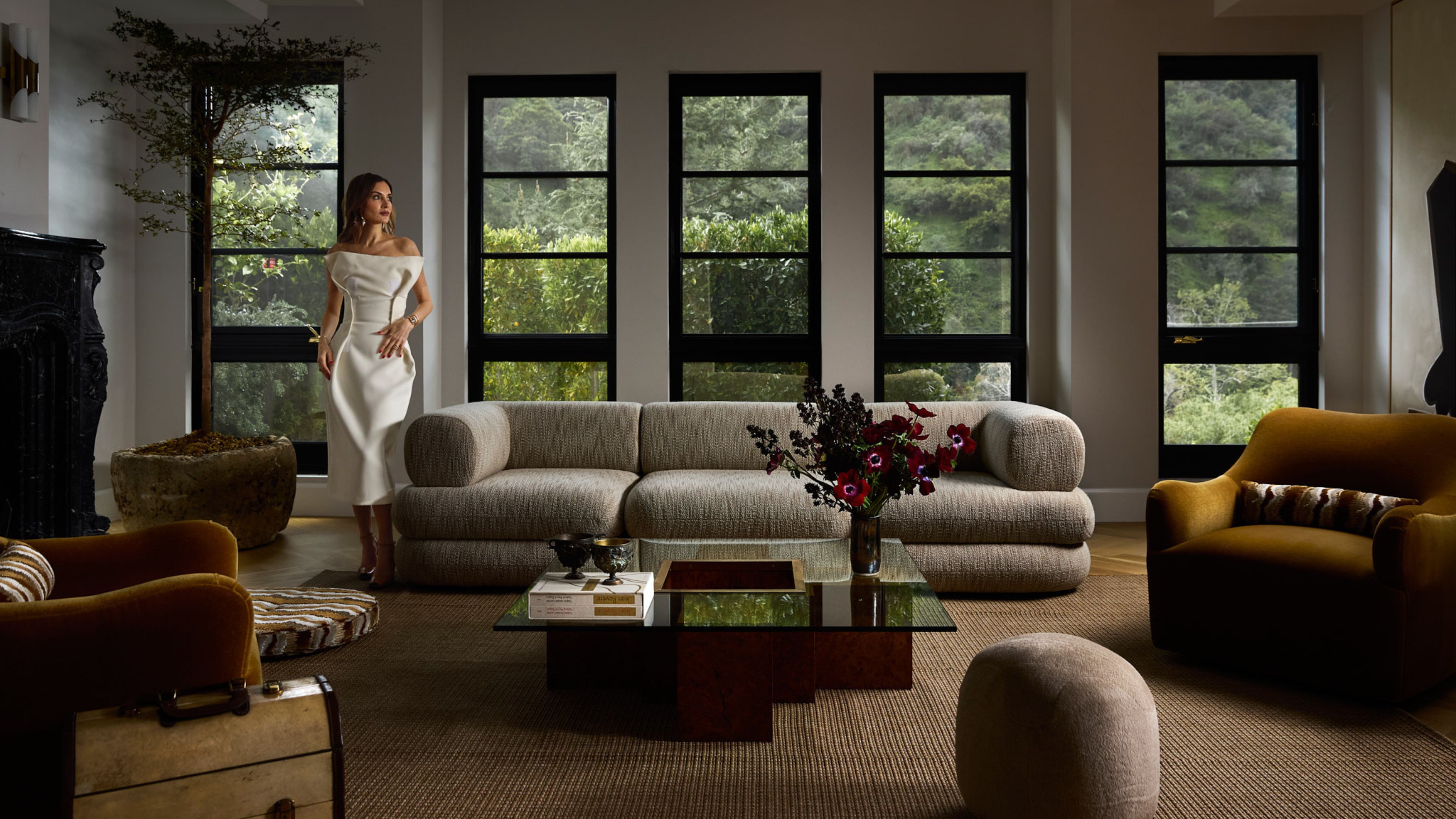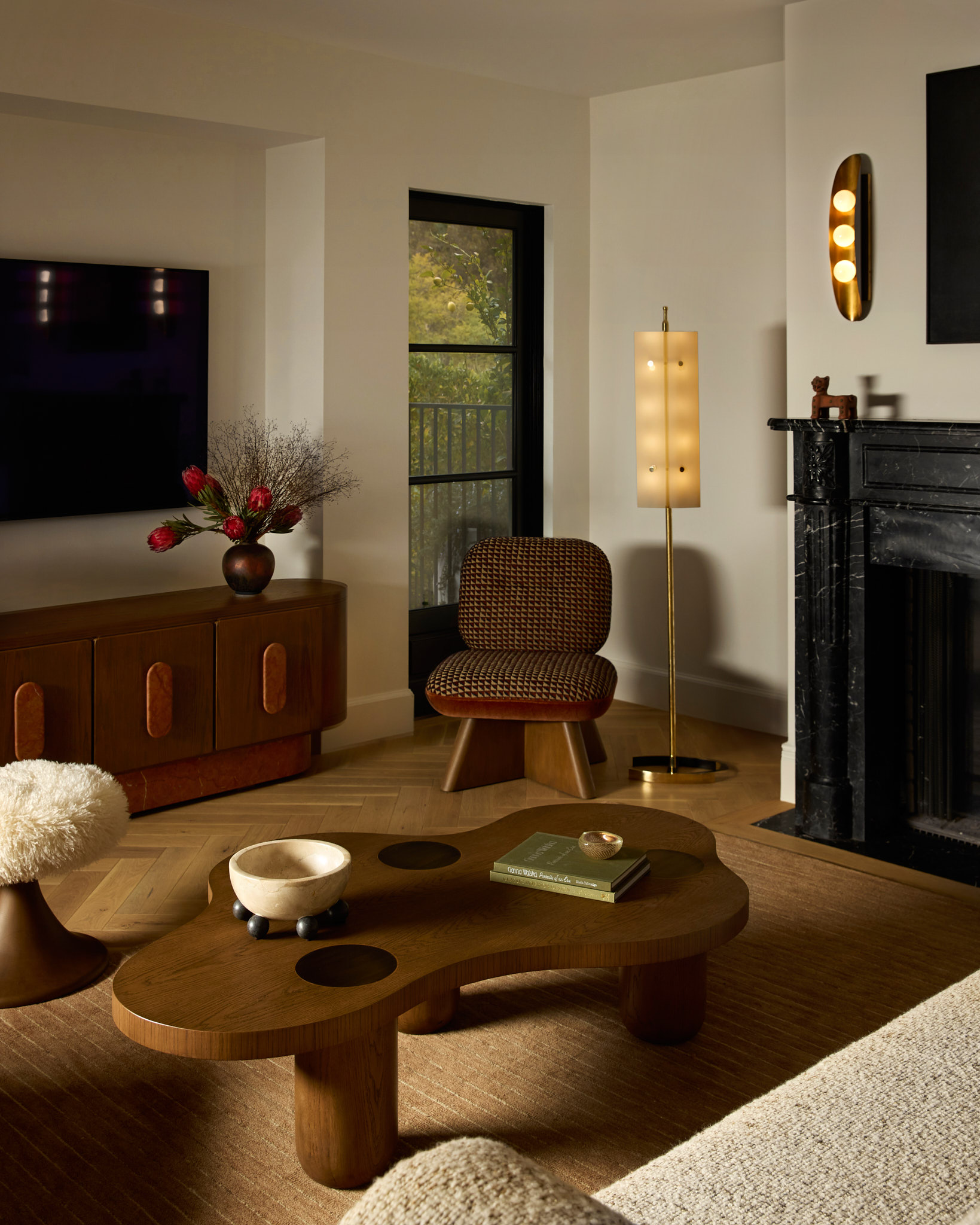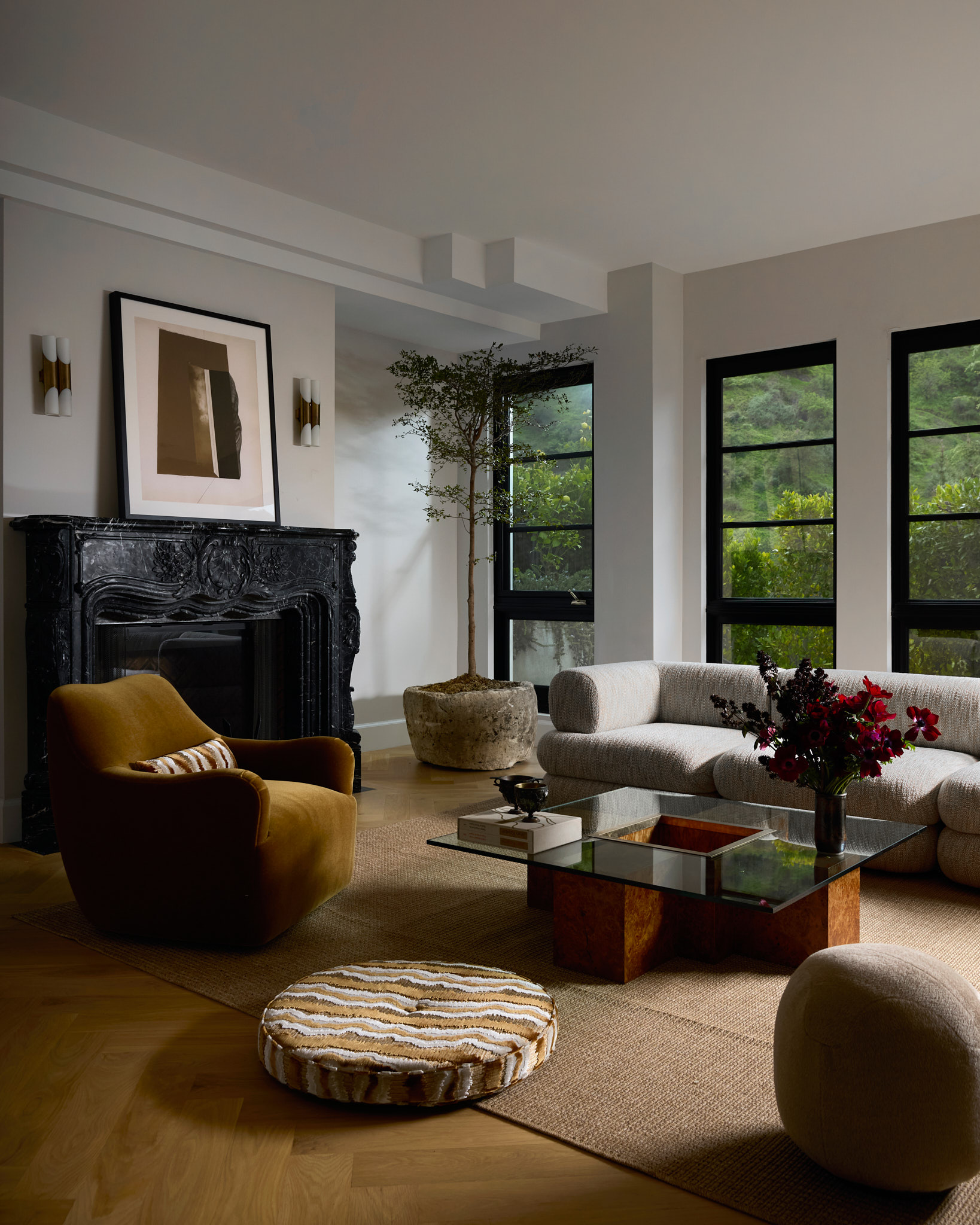
Nina Takesh has always treated design as a dialogue — between eras, influences, and disciplines. Between form and function. Between Rive Droite refinement and California cool. Her newly launched line, Nina Takesh Furniture, is the latest chapter in that conversation: a tightly edited collection of fourteen pieces, each one a prompt for a more beautiful life.
“Furniture,” she says, “is where beauty meets function in the most intimate way.” This wasn’t about a single chair or one-off accent. “I wanted to introduce a point of view.”
That point of view is quintessentially hers. The daughter of an architect, educated at the Lycée Français in LA, Nina Takesh worked in fashion before founding beloved luxury baby brand Petit Trésor (where clients included Gwen Stefani and Jennifer Lopez), before eventually pivoting to interiors. Her Instagram audience — 700k and counting — might know her for her curated eye and globe-spanning taste, but her true superpower is editing. Distilling.

And here, she’s done exactly that. No filler, no excess. Just essential pieces, speaking to one another: stacked, curvaceous silhouettes that nod to mid-century French design while remaining rooted in comfort. “I’m drawn to soft, enveloping forms visually, but they also serve a purpose,” she explains.
Take the Époque Chair, designed to “hug the body in the most supportive, elegant way.” The Rêverie Sofa is modular, plush, generous. The Mélange Credenza is both living room storage and sculpture — a curved pedestal and marble accents — nothing extraneous.
Materials were chosen for contrast. Though upholstered in accessible fabrics by default, the standout upholsteries — plush velvets and refined tweeds from Misia Paris, a favorite textile house of Nina’s — play beautifully against marble and polished brass.
“When you have a rounded silhouette, the fabric becomes even more important,” she says. “It enhances the tactile experience.”

The palette may skew neutral, but the impression is anything but. Everything here is layered, lived-in, and considered. “It’s refined, but never precious,” Nina says: “Pieces you can live with, not just look at.”
The collection feels like a natural progression for someone who’s genuinely seen and done what other designers only gesture toward. The French influence is clear, but so is the sense of grounded-ness — of pieces made for real homes and real rituals.
At a time when much of the market favors statement pieces and scrollable novelty, Nina’s approach is something else entirely: holistic. Cohesive. Enduring. A new kind of heirloom.
As with everything she touches, it’s world-building. Thoughtful. Fully imagined from the ground up. Paris, circa 1952 — reframed for now.
Add a sense of flow to your space with the Paradox — an aptly named wood coffee table that balances softness and strength. Curved edges lend a fluid, sculptural feel, while aged brass inlays link the tabletop to bold, cylindrical legs. The silhouette reads modern, but Nina encourages mixing eras: pair it with something antique, perhaps a flea market find from your travels. “That tension creates visual interest,” she says.
Storage or sculpture? The Mélange Credenza says both. Thoughtfully placed marble accents — at the floating pedestal base and on its elongated oblong handles — offer warm contrast to the rich chocolate wood. It’s designed to disguise clutter in plain sight, whether it lives in a dining room, home office, or anywhere else elegance is expected.
Inspired by the arc of a butterfly mid-flight, the Papillon Counter Stool marries asymmetry with structure. Clean seams, crisp boxed edges, and precise metalwork lend it polish; ergonomic shaping makes it surprisingly comfortable. Unlike most counter stools, this one actually invites you to sit — no perching, no awkward lean, just perfectly proportioned support — right at counter height.
Resist the urge to push this sofa — or anything else in the collection — flush against the wall. “It leaves an awkward no-man’s-land in the center,” Nina says. Instead, let the Rêverie Sofa float. With its curved form and sculptural presence, it’s meant to anchor a room, not disappear into it. Nina recommends pairing it with a vintage rug and “something unexpected, like a bold ceramic or a soft shearling accent.”
Finally, an accent chair you’ll actually want to linger in. The Croisé Chair curves like a quiet embrace, subtly hugging the back for comfort, without looking like it’s trying to. No clunky proportions, no overwrought padding. Just a beautifully shaped seat made for slow coffee sips and sundrenched afternoon reads. Use it to complete a conversation area — or to redeem a once-awkward corner.
Nina’s secret to a livable space? “Layering,” she says. Layer your lighting, your personal touches, your textures. The Chapeau makes that last part easy. Shown here at its furriest in shearling, though it’s also available in bouclé, velvet, and linen. Try it at the foot of your favorite chair — ideally in a fabric that contrasts with the one you’ve already chosen. The tension makes it sing.
“This collection really is the culmination of everything that’s shaped me as a designer,” Nina says.“Growing up with a father who was an architect, I developed an early fascination with proportion, structure, and the idea that design can truly shape the way we live. My Parisian education gave me a deep respect for elegance, formality, and timelessness — but also for whimsy and romance.”
While you're in the Nina state of mind, the designer's Ruggable collaboration remains a forever favorite.







